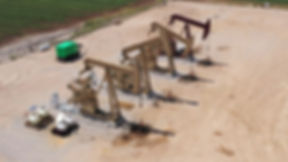

SURVEYS, INSPECTIONS & NDT
The definition of Nondestructive testing (NDT) for ASNT is the process of inspecting, testing, or evaluating materials, components or assemblies for discontinuities, or differences in characteristics without destroying the serviceability of the part or system. In other words, when the inspection or test is completed the part can still be used.
In contrast to NDT, other tests are destructive in nature and are therefore done on a limited number of samples ("lot sampling"), rather than on the materials, components or assemblies actually being put into service.
These destructive tests are often used to determine the physical properties of materials such as impact resistance, ductility, yield and ultimate tensile strength, fracture toughness and fatigue strength, but discontinuities and differences in material characteristics are more effectively found by NDT.
-
Pipeline integrity assessment by:
-
ECDA (External Corrosion Direct Assessment)
-
ICDA (Internal Corrosion Direct Assessment)
-
-
Evaluation of buried pipeline coatings by:
-
DCVG / ACVG (Direct and Alternating Current Voltage Gradient Surveys)
-
PCM (Pipeline Current Mapping)
-
GPS (Global Positioning System
-
-
Determination of buried facilities using RF/GPS
-
Evaluation of cathodic protection systems using CIPS/GPS
-
Diagnosis of leaks in valves by acoustic emission / V-PAC
-
GPS planimetry
-
Thickness measurement by UT
-
Phased array ultrasonic testing of:
-
Welds
-
Thickness measurements
-
Corrosion inspection
-
Crack detection
-
-
Evaluation of welding with penetrating liquids and magnetic particles
-
Infrared Thermography
-
Eddy Current for SCC (Stress Corrosion Cracking)
-
Electromagnetic Acoustic Testing (EMAT)
-
Guided wave ultrasonic testing
We carry out ongoing inspections, evaluating through Non-Destructive Tests (NDT) based on International Standards and procedures, as well as the incorporation of current technologies for the inspection of facilities, systems, equipment and components, such as:
-
Pressure vessels
-
Pipelines
-
Tanks
-
Valves